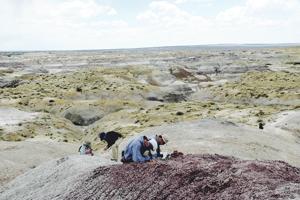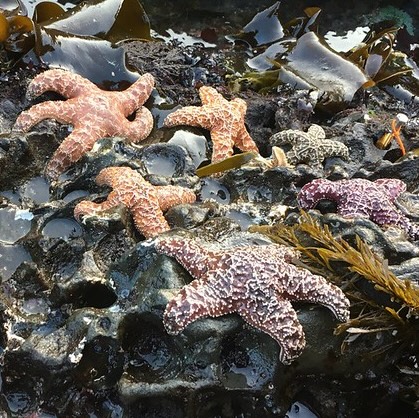Research led by Andrew Flynn, a geology professor at New Mexico State University, has unveiled significant findings about the last surviving dinosaurs in New Mexico. Published in the October 23, 2023 issue of the journal Science, this study challenges long-held beliefs about the state of dinosaur populations leading up to their mass extinction approximately 66 million years ago.
Flynn’s research, which originated during his Ph.D. studies at Baylor University, involved collaboration with various institutions, including New Mexico Tech, the University of Edinburgh, and the Smithsonian Institution. The paper, titled “Late-surviving New Mexican dinosaurs illuminate high-end Cretaceous diversity and provinciality,” focuses on the Naashoibito member in the De-Na-Zin Wilderness Area, near Farmington, New Mexico.
The study reveals that the last non-avian dinosaurs were not in decline before the asteroid impact that led to their extinction. “The Naashoibito dinosaurs lived at the same time as the famous Hell Creek species in Montana and the Dakotas. They were not in decline. These were vibrant, diverse communities,” stated co-author Dan Peppe, a professor of geosciences at Baylor and Flynn’s Ph.D. advisor.
The dinosaur fauna of New Mexico is characterized by the large, long-necked sauropod Alamosaurus, which researchers estimate could reach lengths of up to two semi-tractor trailer rigs and weigh between 30 to 80 tons. Its height ranged from 30 to 50 feet, making it comparable in size to a blue whale, but considerably lighter.
“Our new data shows that the dinosaurs in New Mexico, which are made up of very different species than those found in Wyoming and North Dakota, are the same age,” Flynn explained. The findings indicate that these dinosaurs were thriving, countering the previously accepted notion that dinosaur diversity was in decline before the catastrophic event.
In addition to the implications for dinosaur survival, the research also highlights notable differences in mammalian species following the extinction event. According to Flynn, the surviving mammals retained distinct north and south bio provinces, suggesting a different evolutionary response compared to other mass extinction events.
Through geological analysis, Flynn and his team measured the magnetic pole direction of the rocks containing dinosaur fossils. They combined this data with geochemical ages of sandstone crystals to confirm that the fossils found in northern New Mexico date back to the last 380,000 years of the Cretaceous period, coinciding with the timeline of other well-known dinosaurs like Tyrannosaurus and Triceratops from the Hell Creek Formation.
“The extinction of the dinosaurs is the most famous instance of mass death in the history of Earth,” noted Steve Brusatte, a professor of paleontology and evolution at the University of Edinburgh. He emphasized the significance of the New Mexico fossils, stating, “Now, in New Mexico, we have fossils of dinosaurs that were there right at the end. These were the dinosaurs that were greeted by the asteroid.”
The research underscores a critical shift in the understanding of dinosaur extinction. Flynn remarked, “What we found is that these rocks were deposited in the last 380,000 years of the Cretaceous period. These were the very last dinosaurs alive in New Mexico before the asteroid impact.”
Looking ahead, Flynn plans to focus on uncovering fossil plants in the Naashoibito Member. “I’m trained as a paleobotanist,” he explained. “Finding the fossil plants there would allow us to show how different the flora was before and after the extinction in New Mexico.” Despite previous efforts yielding no fossil plants, Flynn remains optimistic about future discoveries that may further illuminate the ecological landscape of this period.
Through this groundbreaking research, Flynn and his collaborators are reshaping our understanding of the late Cretaceous ecosystem, painting a more vibrant picture of the last days of the dinosaurs before their sudden extinction.







